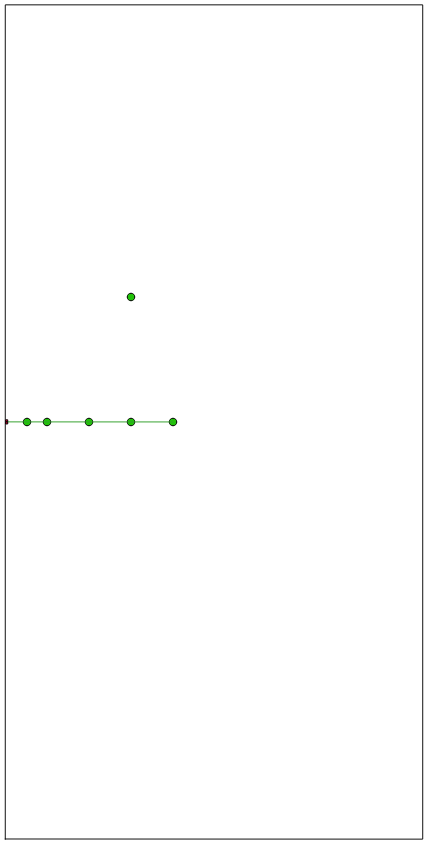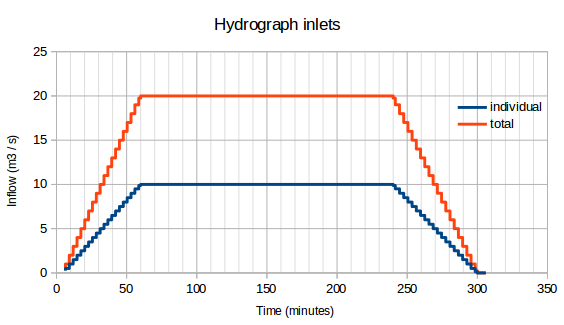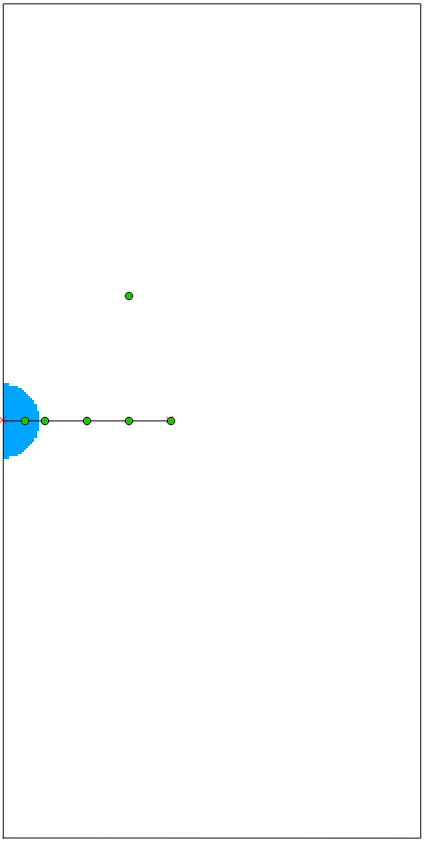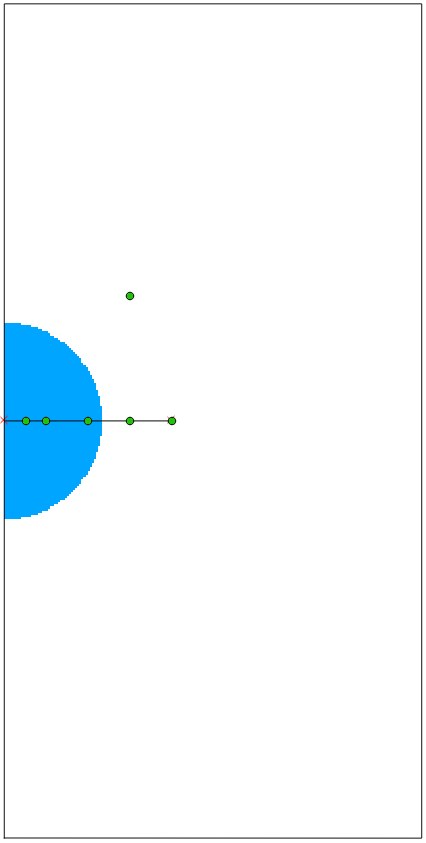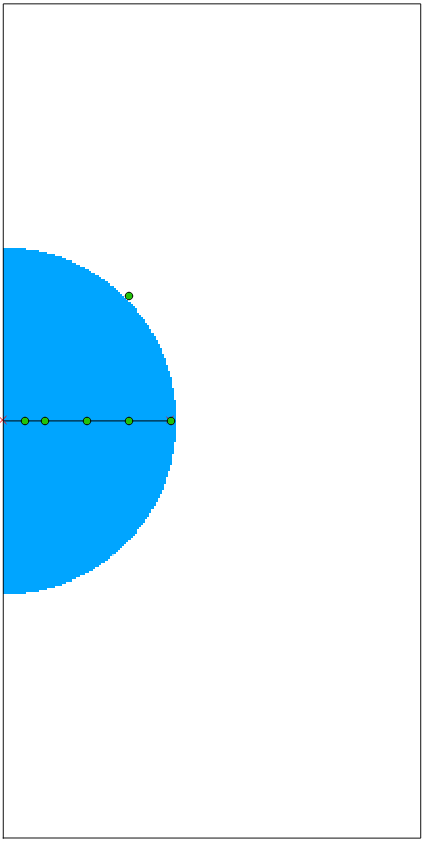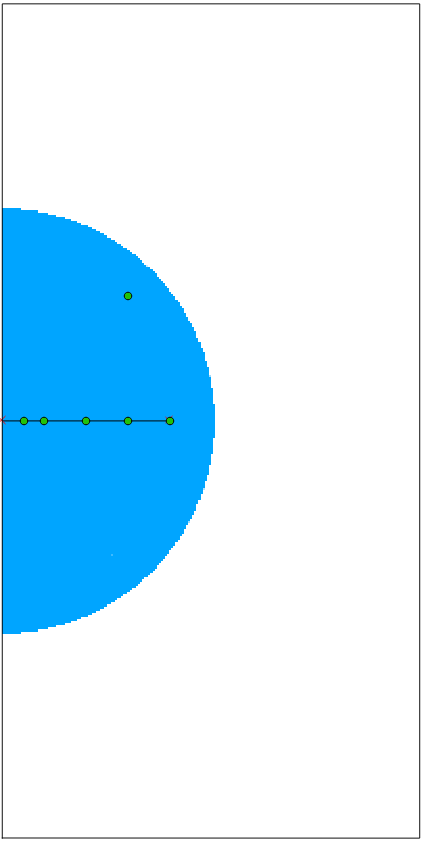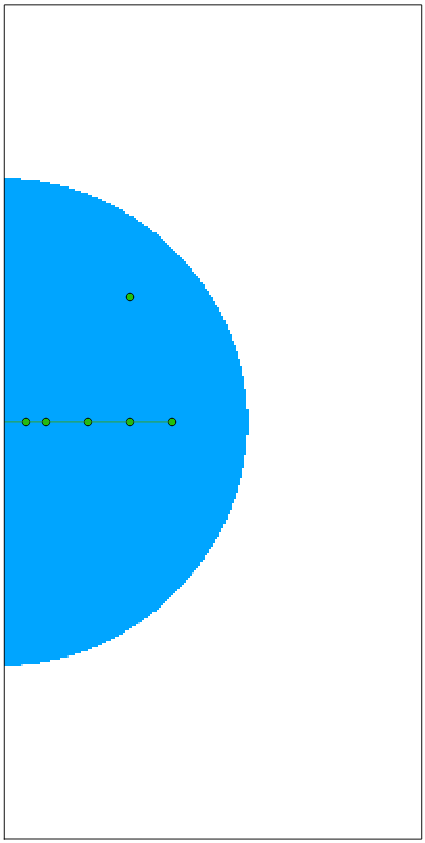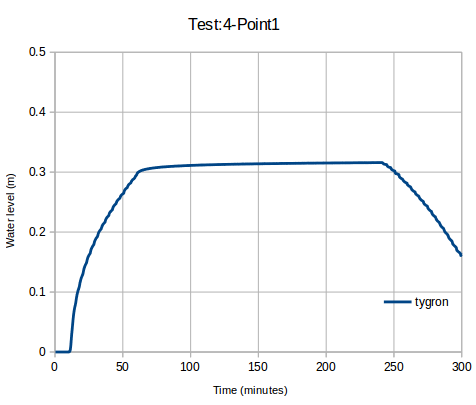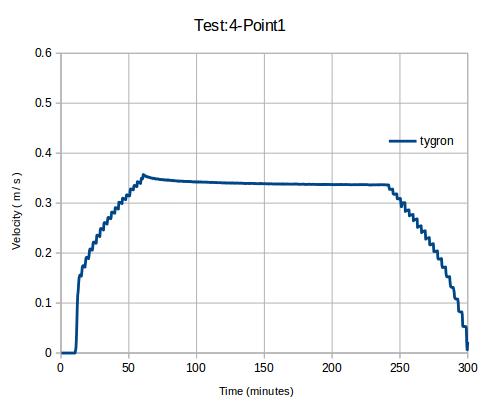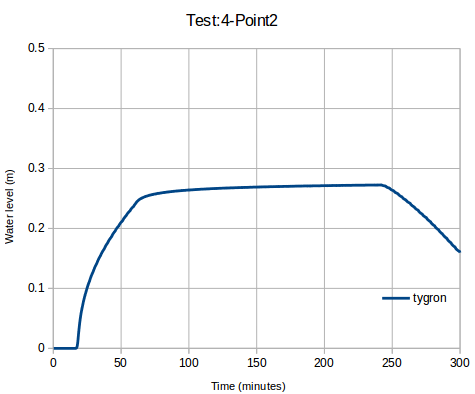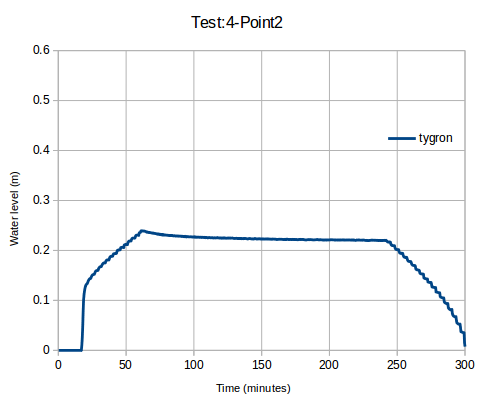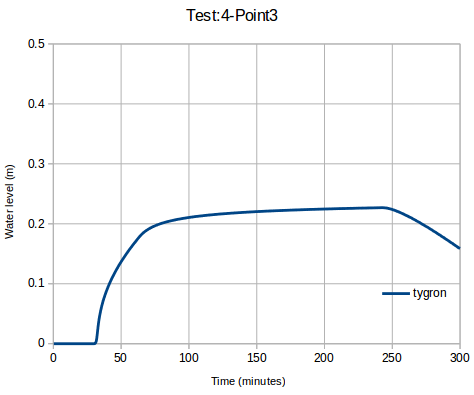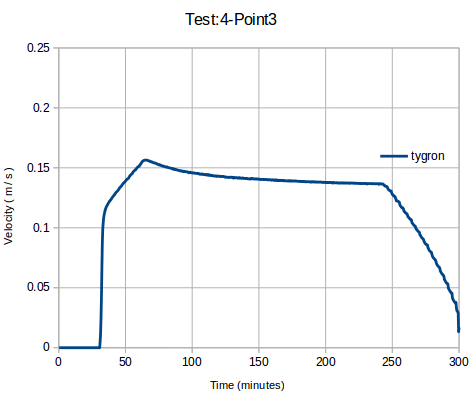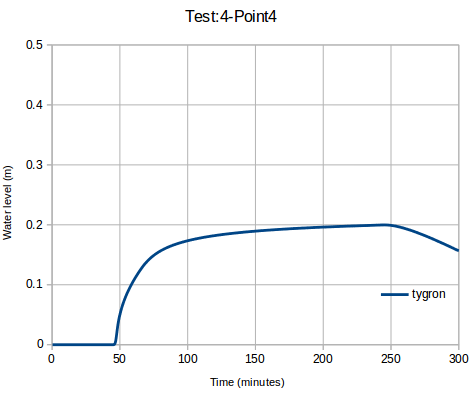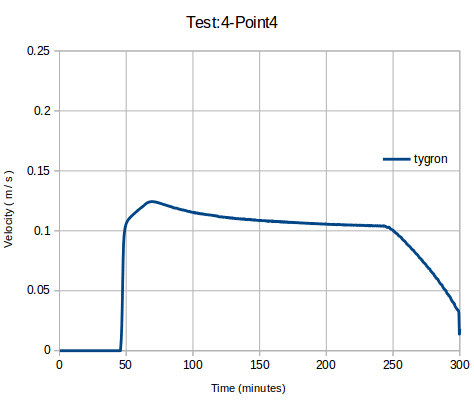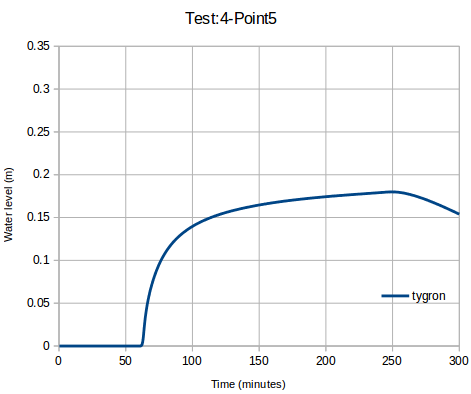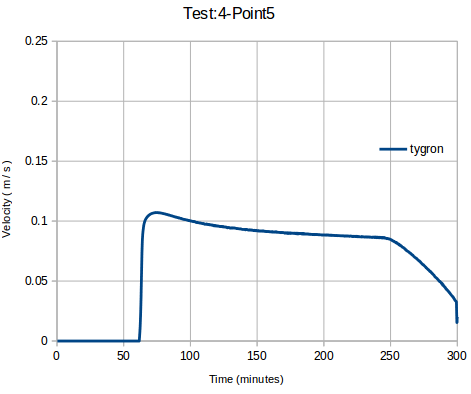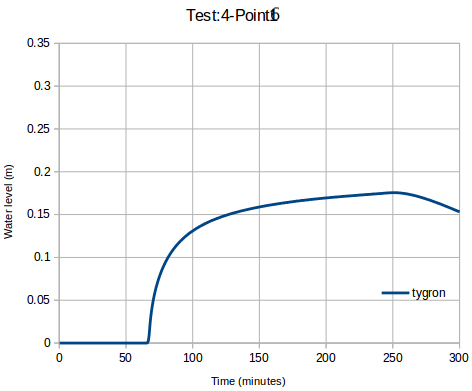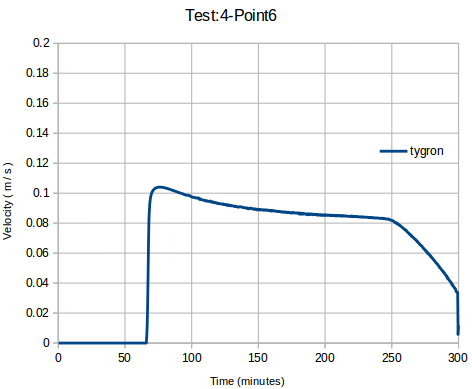UK EA benchmark 4 (Water Module)
This page contains the test case 3 of the UK benchmark named Test 4 – Speed of flood propagation over an extended floodplain as well as its result generated by the Water Module in the Tygron Platform.
The objective of the test is to assess the package’s ability to simulate the celerity of propagation of a flood wave and predict transient velocities and depths at the leading edge of the advancing flood front. It is relevant to fluvial and coastal inundation resulting from breached embankments.
Description
This test is designed to simulate the rate of flood wave propagation over a 1000m x 2000m floodplain following a defence failure, Figure (a). The floodplain surface is horizontal, at elevation 0m. One inflow boundary condition will be used, simulating the failure of an embankment by breaching or overtopping, with a peak flow of 20 m 3 /s and time base of ~ 6 hours. The boundary condition is applied along a 20m line in the middle of the western side of the floodplain.
Boundary and initial condition
- Inflow boundary condition as shown in Figure (b). Table provided as part of dataset.
- All other boundaries are closed.
- Initial condition: Dry bed.
Parameter values
- Manning’s n: 0.05 (uniform)
- Model grid resolution: 5m (or ~80000 nodes in the area modelled)
- Time of end: the model is to be run until time t = 5 hours (if an alternative end time is used run times must be reported for t=5 hours)
Required output
- Software package used: version and numerical scheme.
- Specification of hardware used to undertake the simulation: processor type and speed,RAM.
- Minimum recommended hardware specification for a simulation of this type.
- Time increment used, grid resolution (or number of nodes in area modelled) and total simulation time to specified time of end.
- Raster grids (or TIN) at the model resolution consisting of:
- Depths at times 30mins, 1 hour, 2 hours 3 hours, 4 hours.
- Velocities (scalar) at times 30mins, 1 hour, 2 hours 3 hours, 4 hours.
- Plots of velocity and water elevation versus time (suggested output frequency 20s) at the six locations represented in Figure (a) and provided as part of dataset.
- These locations are:
| Point ID | X | Y |
|---|---|---|
| 1 | 50 | 1000 |
| 2 | 100 | 1000 |
| 3 | 200 | 1000 |
| 4 | 300 | 1000 |
| 5 | 300 | 1000 |
| 6 | 300 | 1300 |
Dataset content
- Upstream boundary condition table (inflow vs. time). Filename: Test4BC.csv
- Location of output points. Filename: Test4Output.csv
The model geometry is as specified in Section 2. No DEM is provided as the ground elevation is uniformly 0.
Technical setup
The setup in this case is a flat surface. It does not require the import of a dem file, since all height values are set to 0. Other stats:
- The grid cell size: 5 m.
- The area size: 1010x2010, which includes a border of 5 meters and the required domain of 1000m, x 2000m.
- The measurement points have been put on the correct positions, see the image below.
In order to regulate the water level according to the water level graph, we used the following setup: Only two inlets are used. These are put on the cells above and below the center line indicated by the green line. Each inlet had its own grid cell. The inlets were configured as:
- External area (m2): 1 000 000 000;
- Water level (m): 1;
- Threshold (m): none;
- Inlet Q (m):
- Inlet locations:
Results
Contours
Graphs


